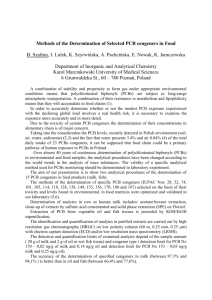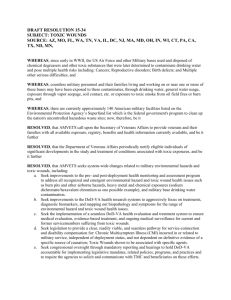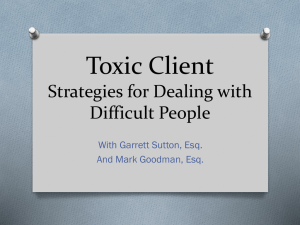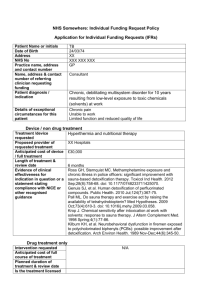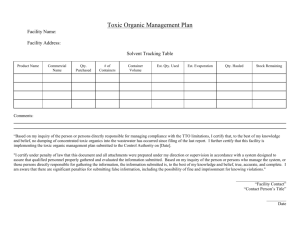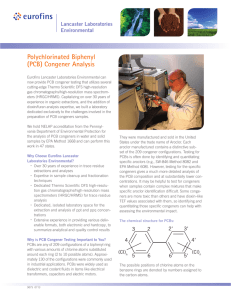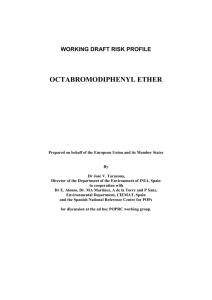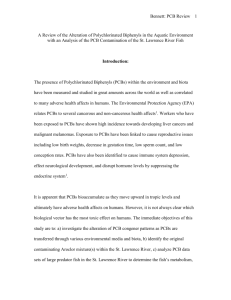The exposure of the Croatian population to toxic environmental
advertisement
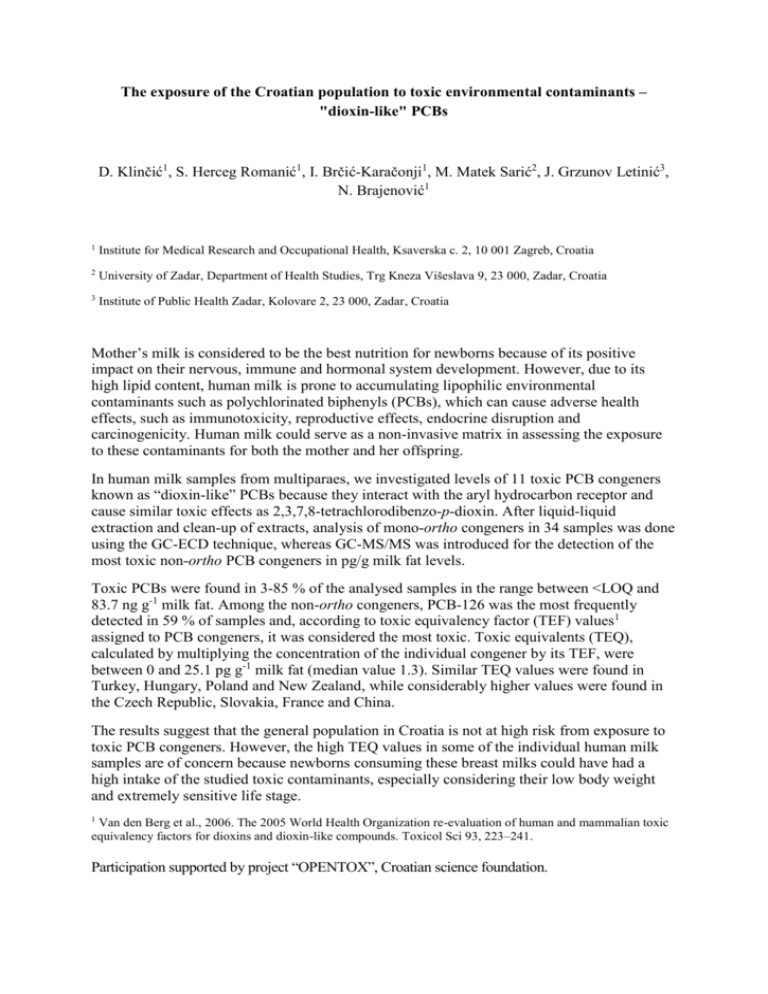
The exposure of the Croatian population to toxic environmental contaminants – "dioxin-like" PCBs D. Klinčić1, S. Herceg Romanić1, I. Brčić-Karačonji1, M. Matek Sarić2, J. Grzunov Letinić3, N. Brajenović1 1 Institute for Medical Research and Occupational Health, Ksaverska c. 2, 10 001 Zagreb, Croatia 2 University of Zadar, Department of Health Studies, Trg Kneza Višeslava 9, 23 000, Zadar, Croatia 3 Institute of Public Health Zadar, Kolovare 2, 23 000, Zadar, Croatia Mother’s milk is considered to be the best nutrition for newborns because of its positive impact on their nervous, immune and hormonal system development. However, due to its high lipid content, human milk is prone to accumulating lipophilic environmental contaminants such as polychlorinated biphenyls (PCBs), which can cause adverse health effects, such as immunotoxicity, reproductive effects, endocrine disruption and carcinogenicity. Human milk could serve as a non-invasive matrix in assessing the exposure to these contaminants for both the mother and her offspring. In human milk samples from multiparaes, we investigated levels of 11 toxic PCB congeners known as “dioxin-like” PCBs because they interact with the aryl hydrocarbon receptor and cause similar toxic effects as 2,3,7,8-tetrachlorodibenzo-p-dioxin. After liquid-liquid extraction and clean-up of extracts, analysis of mono-ortho congeners in 34 samples was done using the GC-ECD technique, whereas GC-MS/MS was introduced for the detection of the most toxic non-ortho PCB congeners in pg/g milk fat levels. Toxic PCBs were found in 3-85 % of the analysed samples in the range between <LOQ and 83.7 ng g-1 milk fat. Among the non-ortho congeners, PCB-126 was the most frequently detected in 59 % of samples and, according to toxic equivalency factor (TEF) values1 assigned to PCB congeners, it was considered the most toxic. Toxic equivalents (TEQ), calculated by multiplying the concentration of the individual congener by its TEF, were between 0 and 25.1 pg g-1 milk fat (median value 1.3). Similar TEQ values were found in Turkey, Hungary, Poland and New Zealand, while considerably higher values were found in the Czech Republic, Slovakia, France and China. The results suggest that the general population in Croatia is not at high risk from exposure to toxic PCB congeners. However, the high TEQ values in some of the individual human milk samples are of concern because newborns consuming these breast milks could have had a high intake of the studied toxic contaminants, especially considering their low body weight and extremely sensitive life stage. 1 Van den Berg et al., 2006. The 2005 World Health Organization re-evaluation of human and mammalian toxic equivalency factors for dioxins and dioxin-like compounds. Toxicol Sci 93, 223–241. Participation supported by project “OPENTOX”, Croatian science foundation.
